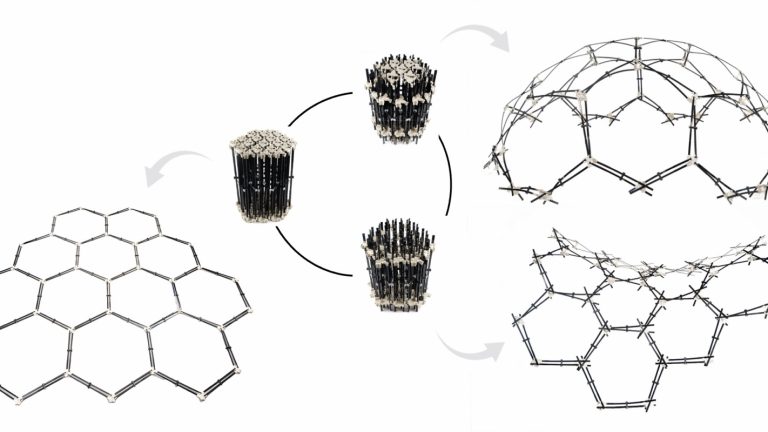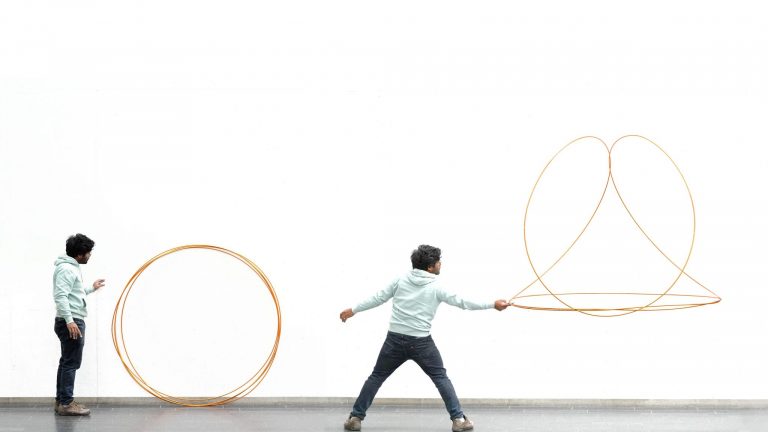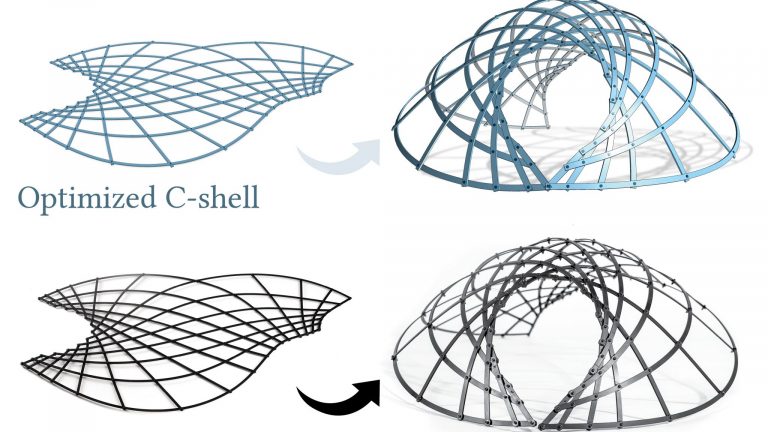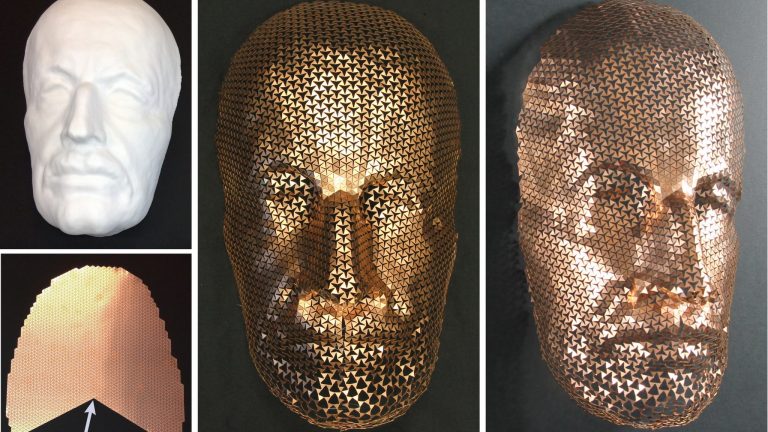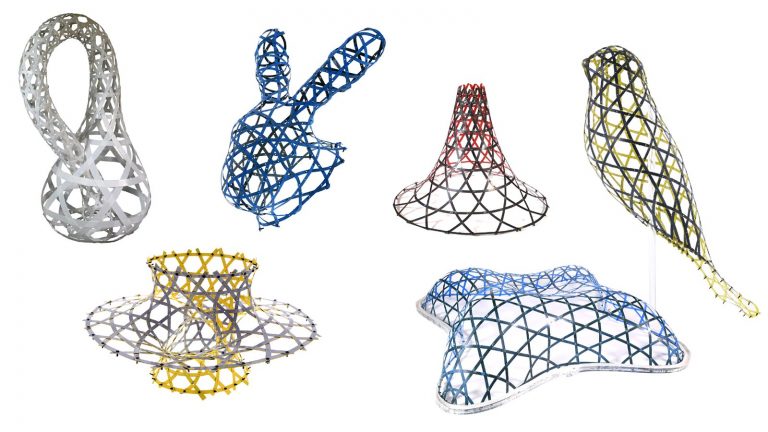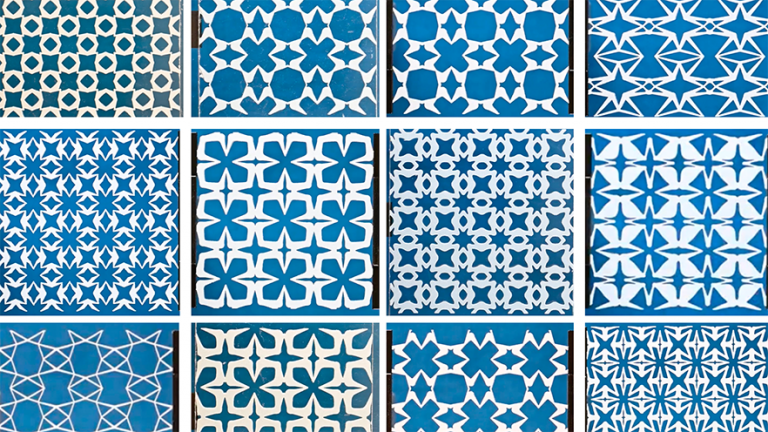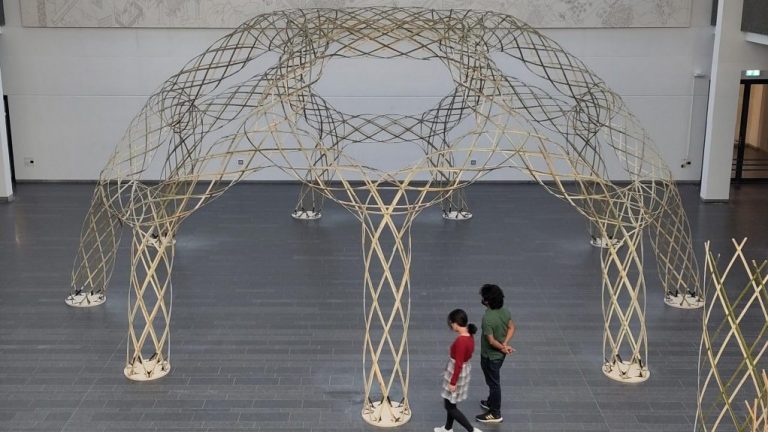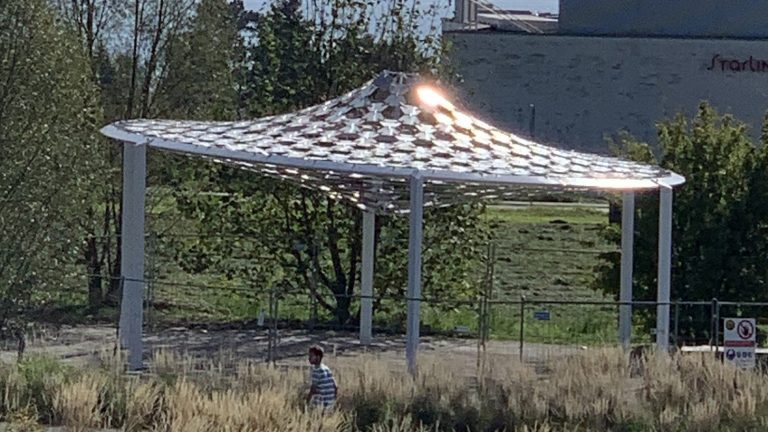When you access EPFL websites, we may set cookies on your devices and process personal data about you in accordance with our privacy policy. You can block cookies by using your browser settings.
Skip to content
- Overview
- Research at GCM focuses on efficient representations, scalable data structures, and robust algorithms for digital 3D models. Our goal is to understand fundamental principles of geometric computing and leverage these insights to develop new algorithms and tools for 3D shape analysis, simulation, optimization, design, and fabrication. Our research explores the interface of several scientific disciplines, such as mathematics, computer science, material science, mechanical engineering, and architecture to facilitate innovative computational design solutions for advanced manufacturing and construction.
Deployable Structures
- Summary
- Shape-morphing structures are physical systems that can transition (morph) from one geometric state to another. They find applications in diverse fields, for example as deployable solar panels for satellites, medical implants such as heart stents, morphable air foils, smart textiles, soft robotics, building instrumentation, or tissue engineering. The shape-morphing deformation can be initiated by external forces, for example, a sheet of paper folded into an elaborate origami shape, or triggered by an internal actuation mechanism, such as inflation or swelling. Significant progress has been made in recent years in material science, mechanical engineering, and digital fabrication technologies. However, there are currently only very limited solutions to aid the design of shape-morphing surfaces. The intricate coupling of geometry, material, and actuation leads to highly complex shape spaces that cannot be explored effectively with existing tools. New computational methods are thus required to realize the full potential of shape-morphing surfaces and move beyond the limited set of geometries possible today. In this project we focus on deployable surface structures that can be fabricated in a simple state and then be actuated to a programmed 3D target state. This means that the deployed state is encoded in the fabrication state through locally prescribed deformation behavior. Our central goal is to develop novel computational tools for inverse design of such shape-morphing surfaces, that is, to find a suitable fabricable material state that can be automatically deployed to a functional 3D target shape.
Smart Materials
- Summary
- Using insights from geometry and physical simulation, we can alter the behavior of materials to meet functional goals. For instance, we can cut slits into a solid, inextensible sheet of material to allow it to expand, and then by carefully designing these cuts, we can ensure the sheet pops into the curved surface of our choice when it is stretched. Or, we can design fine-scale microstructure geometry to create a 3D printed object that deforms in useful or surprising ways when forces are applied.
This approach to tailoring materials, known as metamaterial design, can enable exciting new fabrication methods and produce new classes of lightweight, robust designs. This project seeks to develop computational techniques and tools such as efficient PDE solvers and shape optimization algorithms to advance metamaterial research on several fronts.
Architectural Geometry
- Summary
- We explore how geometric computing can facilitate new design methodologies for architectural applications. Geometric reasoning, advanced numerical optimization, and interactive shape exploration help facilitate material- and construction-aware design of complex architectural systems. We aim to translate basic research into large scale demonstrators to validate our results and showcase their potential for architectural applications.



